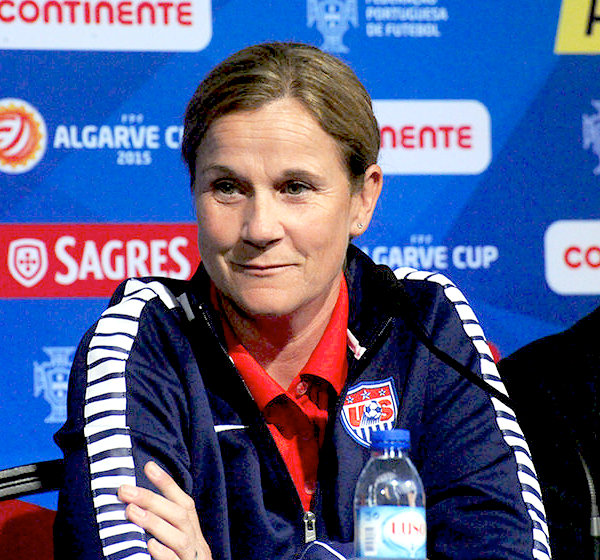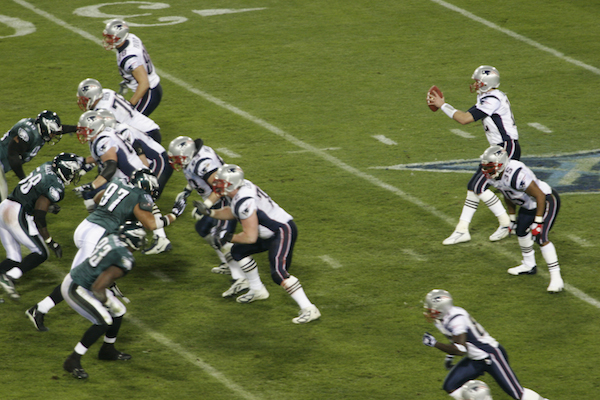It’s hard to believe in retrospect but after their first three World Cup games, the U.S. women’s national soccer team was in a state of crisis. After their first game, a 3-1 win against Australia, a staff writer for the Australian Football Federation concluded that the USA “just aren’t that good.” After the U.S. team’s next game, a 0-0 draw against Sweden, some of their fans were beginning to wonder if that staff writer had been correct. After the team’s third game, a lackluster 1-0 win over Nigeria in what was supposed to be the easiest game of the group stage, the rumors, doubts, and criticism began to flow freely. Despite being undefeated through the group stage and advancing to the single elimination knockout stage as a group winner, the American team did not look or feel like it could win the World Cup.
The problem, according to a consensus of critics, was that the team’s talented players were being misused by coach Jill Ellis. She was playing the wrong combination of players in the wrong formations with the wrong tactics. Although soccer is a very fluid game, players (other than the goalie) can generally be said to be playing in one of three positions, defense, midfield, or striker. Formations are referred to in soccer short-hand by a series of numbers referring to the number of players in each position, starting with defense and moving through midfield to striker. The U.S. had been playing a 4-4-2, which is a traditional formation made popular by Brazilian men’s national teams and Milan’s club team in the 1990s. When it’s at its best, the four midfielders each have distinct roles. Two play on either side of the field, supporting the outside defenders when the other team has the ball and joining the attack when their team has it. In the center of the field, one of the remaining two midfielders plays a primarily defensive role, almost as a fifth defender, while the other focuses on being an offensive playmaker. Of the U.S. team’s four starting midfielders throughout the first three games, three of them prefer to focus on being the offensive playmaker. As is said about cooks in a kitchen, that’s too many. As is said about having two starting quarterbacks in football, if you have that many playmaking midfielders, you really have none, because none of them can be effective.
The United States entered the elimination stage of the World Cup without any major changes to their lineup and were able to beat Colombia 2-0 without ever looking truly commanding. During the Colombia game, two of those three playmaking midfielders, Megan Rapinoe and Lauren Holiday, picked up their second yellow cards of the tournament (a yellow card is like a misdemeanor offense in soccer) and were suspended for the team’s next game, a quarterfinal matchup against China. This crisis, the loss of two of the team’s most talented players, provided an opportunity for coach Ellis. Forced to replace Rapinoe and Holiday with lesser known players, Ellis made sure that each of her four midfielders had distinct roles, well suited to their games. Enter 22 year-old Morgan Brian who played that defense-first midfield role which freed Rutgers University’s own Carli Lloyd to push up into her preferred offensive midfield role. The team responded with their best game of the tournament, beating China only 1-0 but looking dominant throughout.
Coach Ellis had clearly found something that worked but the question remained, would she have the nerve to bench Holiday and Rapinoe, two of her most well-known and talented players, in the team’s next game now that they were no longer suspended? And if she did, would that even be a wise decision against the powerful German side? Surely, going back to the team’s setup from the first four games was not the answer, but what was? Building off the success of the lineup against China, Ellis found a third solution. She reinserted Holiday and Rapinoe but changed the team’s shape. Instead of playing a 4-4-2 as she had throughout the tournament, she switched to a 4-5-1. This created distinct roles for Holiday and Rapinoe without interrupting the newfound and effective dynamic between Brian and Lloyd. The U.S. beat Germany 2-0 in Montreal in front of 51,000 screaming fans. In the tournament’s final game, Ellis repeated this setup and was rewarded with an almost unheard of four goals in 16 minutes and a long-awaited World Cup Championship.
The lesson of this parable is that talent is nothing without correct deployment. Okay, perhaps not nothing, the U.S. was still able to advance to the quarterfinals before finding a better way to play, but they likely would not have met their ultimate goal without being redeployed. Putting players into distinct roles which they understood and which fit well with each other was the key to propelling the team to a World Cup championship. The biggest benefactor and most obvious exemplum of this is Carli Lloyd. Winner of the tournament’s version of an MVP trophy, the Golden Ball, Lloyd scored six goals and had two assists, all after the formation change. Before then? Nothing. Whether you’re a player or a coach, a musician or a conductor, an employee or a manager, the message is clear: find a way to put yourself and the people you direct into well-defined roles that play to strengths. Success will follow.


